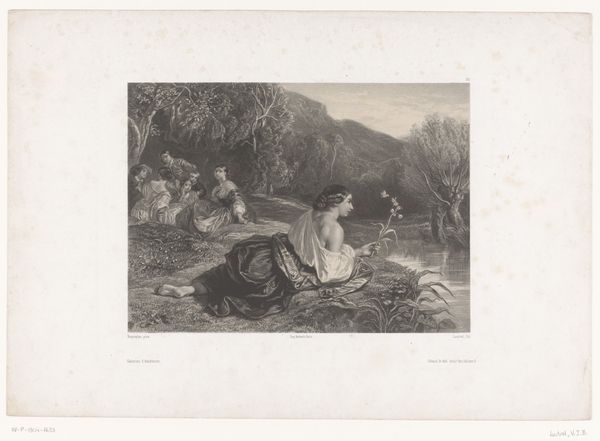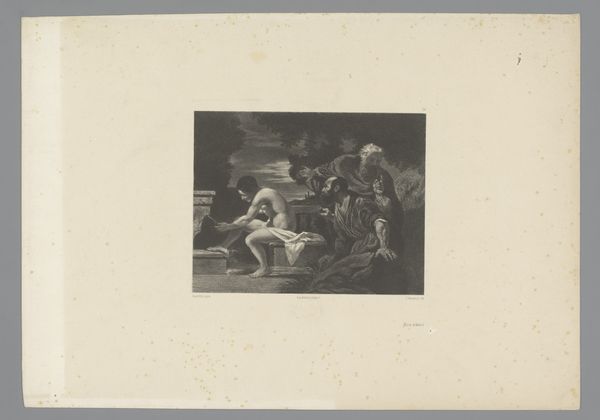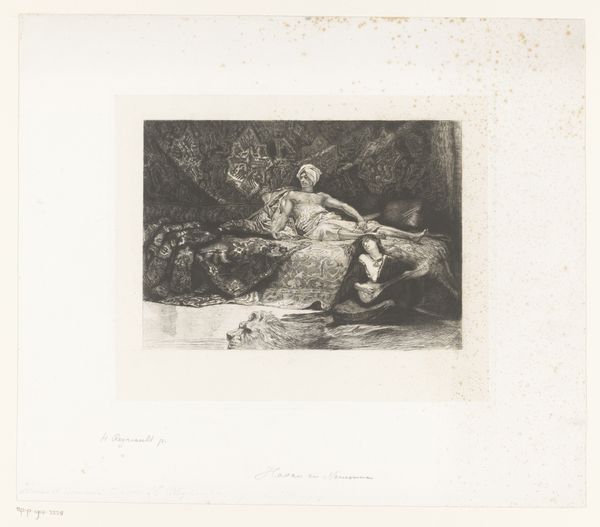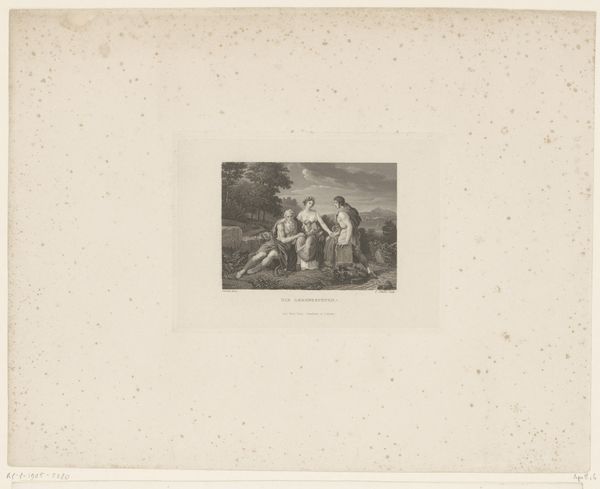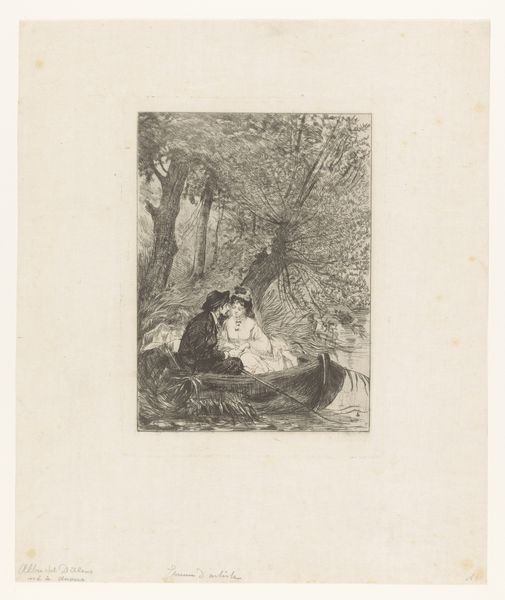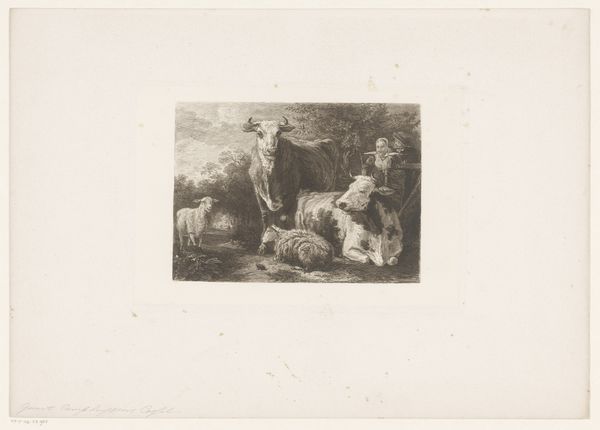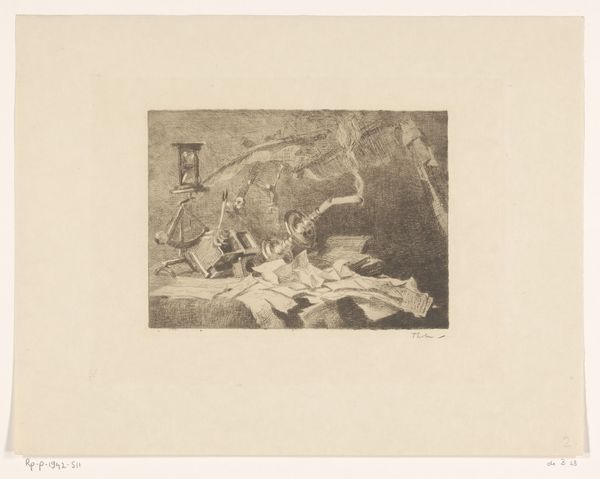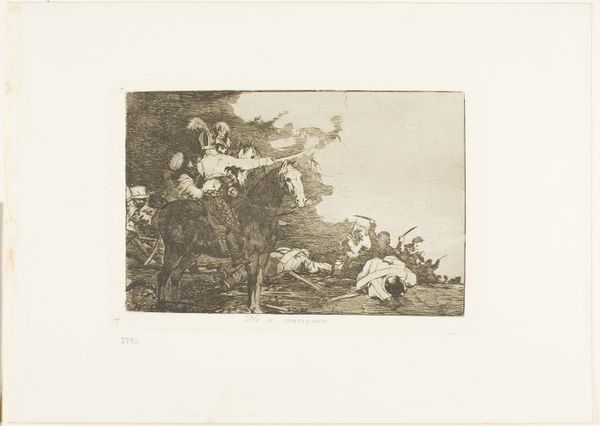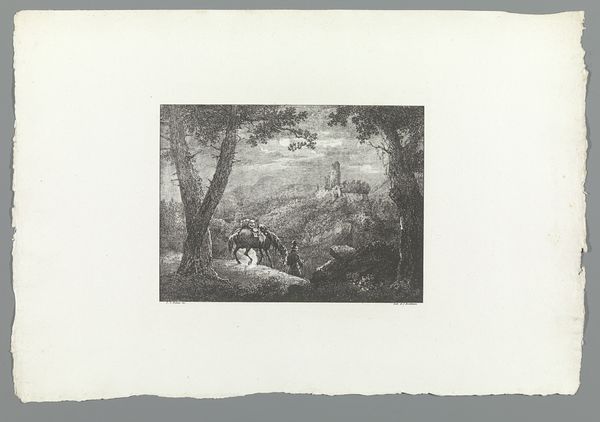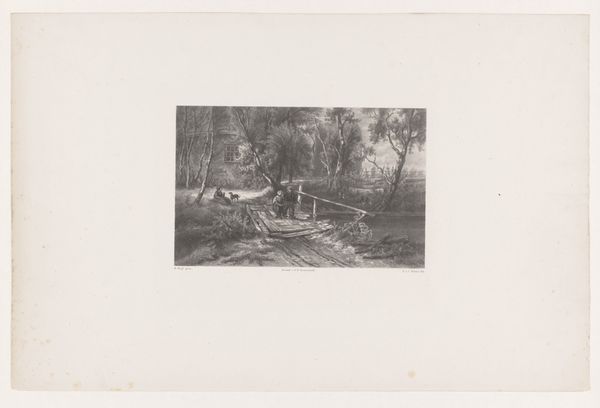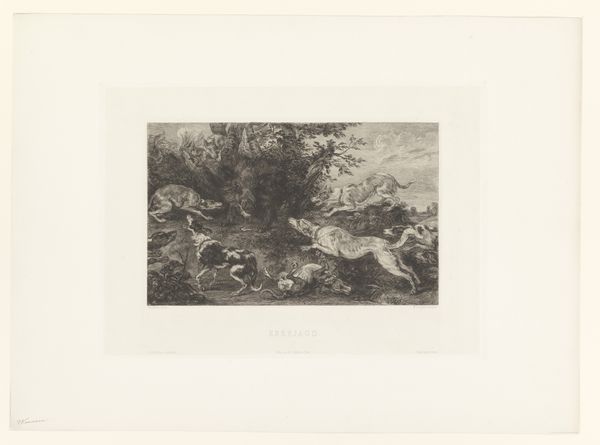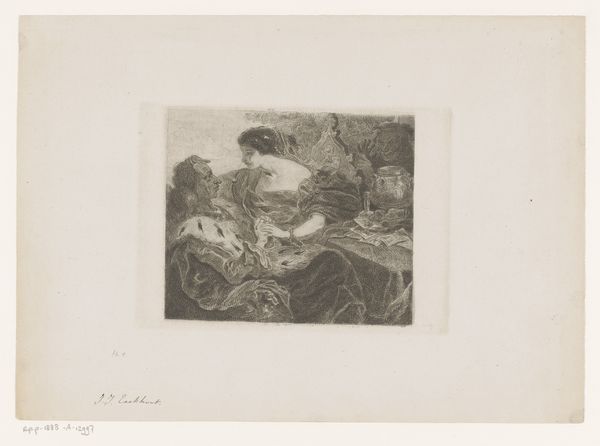
Dimensions: height 156 mm, width 202 mm
Copyright: Rijks Museum: Open Domain
Curator: The prevailing mood is certainly one of tranquility; a dreamlike image filled with gentle light. Editor: Exactly! We're looking at an engraving created by Eugène Gaujean sometime between 1860 and 1900, held here at the Rijksmuseum. The piece is titled "Geluk en Liefde roeien de boot van een jong gezin" which translates to "Happiness and Love rowing the boat of a young family". The visual language is deeply rooted in Romanticism. Curator: Romanticism indeed. A strong compositional focus is certainly placed on the family at rest, nestled together, sheltered in what looks like a river barge. And do you see the winged figure guiding them along? Editor: Without question! And to me that Cupid figure isn’t simply a cherubic form, but a key to unlocking this symbolic journey. In the 19th century, domestic ideals were highly valued and visually reinforced. Curator: Yes, consider also how happiness and love are embodied by these strong figures, guiding the family's vessel with purpose, against an idyllic landscape as a backdrop. It evokes a profound sense of cultural memory, harking back to allegorical traditions found in earlier painting. Editor: I agree. But isn't there also something quietly subversive happening here? The active role of women in guiding the family towards happiness, rowing in unison towards an uncertain future, challenges societal expectations. In other words, where's the male figure directing the journey? It's fascinating, isn't it? Curator: Absolutely. We see symbols not merely as static representations, but as potent actors shaping beliefs and perceptions. The history of the print gives added depth too: consider how prints were instrumental in spreading Romantic ideals throughout Europe. Editor: I agree. This seemingly simple engraving speaks volumes about the socio-political ideals prevalent at the time, whilst prompting a reconsideration of art’s power in either maintaining or shifting conventional standards. Curator: Looking closely has opened fresh ways to understand both our historical past and the symbolic forms that have made up our conscious understanding of life. Editor: Indeed. This image certainly presents a space where art, culture, and history meet to make us think again about how images gain a public and private life over generations.
Comments
No comments
Be the first to comment and join the conversation on the ultimate creative platform.
